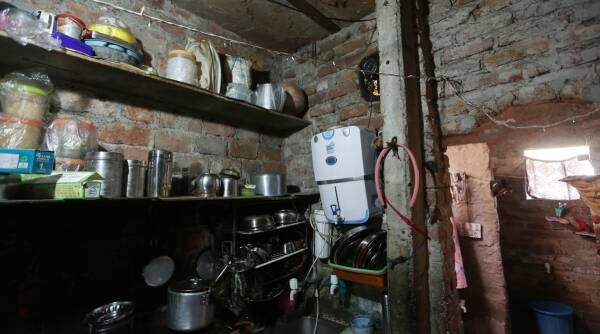The national capital is not immune to encroachment. Nevertheless, Delhi’s Discom’s are now dealing with a new issue: citizens are building houses around electricity poles or utilizing concrete power poles as support pillars. According to the Central Electricity Authority (CEA) standards, dwellings should be kept at a distance of 2.5-3.7 meters in height and 1.2-2 meters in width from an electric post.
Delhi is India’s power theft capital, with city dwellers executing out-of-the-box schemes to steal electricity. In strange situations, concrete power poles have been encroached upon by people and have become a part of the dwelling. Accidents can happen at any time. Any manner of power theft can be committed after the poles are within a person’s property, with no danger of fraud being found. The discoms must find a solution on their own, but local governments must play a role as well.
Power theft occurs in a variety of ways. Land encroachment is common in most countries, but when two seemingly unconnected issues combine, the consequences can be devastating. In Delhi, the same thing happened. It is pointless to blame the power utility alone. It paints a terrible picture of the local government. Because this isn’t going to happen in a day or two. All of the unscrupulous bureaucrats and politicians who supported it are to blame.
In Budha Nagar in Southwest Delhi’s Inderpuri, a densely populated and congested jhuggi-jhopri (JJ) or slum cluster, most houses are four storeys high. Some residents here have extended their houses in a way that electricity poles become a part of their house like the kitchen or balcony. Few others modified the houses with these poles are supporting elements.
Electricity poles run through terraces in some buildings, while high-voltage cables serve as clotheslines. The power pole is currently within their room in one residence. In another case, an electricity pole in the middle of a store was painted to blend in with its surroundings in what appeared to be an attempt to avoid detection.
People are now requesting that the poles be removed from their homes because they are an inconvenience. This will provide legal cover for their incursion. Later on, they may demand free electricity or electricity obtained through other means. Such encroachments are frequent in Delhi’s resettlement colonies.
Similar infractions can be seen in East Patel Nagar and Ranjeet Nagar. Similar images may be seen in wealthy North Delhi neighborhoods such as Kamla Nagar, Model Town, Mukherjee Nagar, Civil Lines, and Shakti Nagar, among others. Discoms have also posted notices on several residences in Rohini for unlawful constructions near electrical poles (DDA)., Janta flats have been renovated to the point where they now contain two extra rooms. Bare conductor wires run through a hole in the wall of one of the houses and onto the balcony. To avoid electrocution, residents simply covered the exposed wires with PVC plastic pipes. The authorities may pay immediate attention, lest it may invite accidents.
An ornaments shop owner has used an electricity pole as a support pillar to extend his four-story structure. To avoid detection, he has covered the pillar with a false ceiling, a wooden cover that matches the shop’s front. A concrete electricity pole runs through the kitchen and terrace of one property. Residents have positioned stoves and cylinders near the pole.
Discom cannot take action against such encroachments, but may only issue notifications and alert the sub-divisional magistrate (SDM) and the authorities concerned, such as the Municipal Corporation of Delhi (MCD), and is frequently at the mercy of Delhi politicians.
Discom enforcement teams investigating for anomalies in unauthorized areas, have a greater incidence of power theft, are sometimes attacked, and are not allowed to inspect buildings for infractions.
Residents of Delhi colonies such as Lajpat Nagar, Amar Colony, Sant Nagar, Zamrudpur, and Dayanand Colony Shaheen Bagh, Sangam Vihar, Aya Nagar, Karawal Nagar, and Nand Nagri have not only encroached and covered power poles but have also dismantled and damaged them. So many departments strive to avoid meddling with the issue by transferring responsibility to others. Power theft will flourish in Delhi as long as Rules are obeyed by the unorganized poor.
Who is the ultimate responsible authority? Politicians and the media have exacerbated the situation. Almost a decade ago, a politician in Delhi took the initiative to restore the electricity lines to premises that had been disconnected owing to power theft. This politician was rewarded by the voters in a general election. The topic has received up to 50 reports every day in the Delhi media. The media has also glorified crime. This has confirmed city dwellers’ belief that government services, particularly energy, should be provided at no cost. The reckless Delhi media’s actions have impacted the entire society.















Add comment